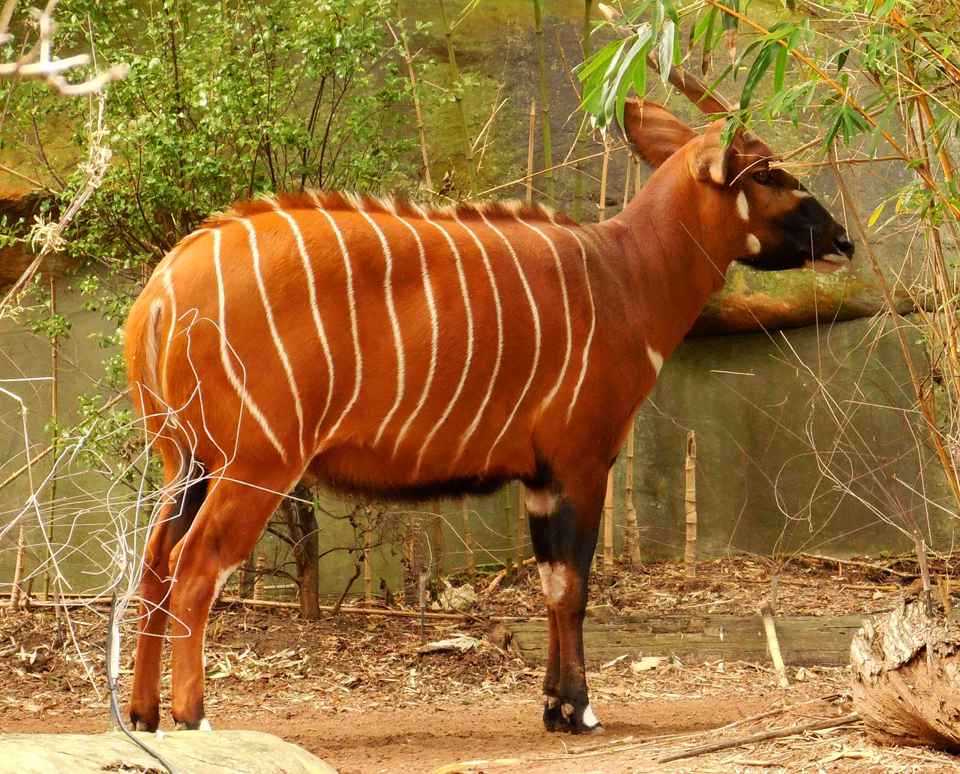
The Bongo(Tragelaphus eurycerus) Is an antelope species found in Africa. The Bongo is classified in the Mammalian order Artiodactyla, and family Bovidae.
Physical Characteristics
Bongos have brown coats with vertical white stripes. Both male and female Bongos have spiral horns but the males’ horns are longer. Bongos have long prehensile tongues that are useful for eating vegetation. The average weight of a Bongo is 230 kilograms(507 pounds); average shoulder height is 1.3 meters(4 feet 3 inches); average length is 2.6 meters(8 feet 6 inches).
| Genus | Tragelaphus |
| Species | T. eurycerus |
| Binomial Name | Tragelaphus eurycerus |
| Length | 2.2-3 m(7’3”-9’10”) |
| Shoulder Height | 1.1-1.4 m(3’7”-4’7”) |
| Horn Length | 75-99 cm(2’6”-3’3”) |
| Weight | 150-405 kg(331 to 893 pounds) |
| IUCN Status | Near threatened |
Range And Habitat
Bongos live in; Benin, Cameroon, Central African Republic, Congo, Côte d’Ivoire, Gabon, Ghana, Guinea, Kenya, Liberia, Niger, Sierra Leone, South Sudan, and Togo. Bongos inhabits forests.
Breeding
Bongo mothers give birth to typically one calf after a gestation of about 9.5 months. Bongo calves are weaned at about 6 months. Bongos reach sexual maturity at about 2 years old.
Diet
Bongos eat leaves, bushes, vines, bark, grasses, herbs, roots, fruits, and vegetables. Bongos need to eat sodium so sometimes they will visit natural salt licks.
Predators
Bongos are usually preyed on by the Leopard(Panthera pardus), Spotted Hyena(Crocuta crocuta), and pythons.
Fun Facts
- Bongos sometimes use their horns to uproot saplings to eat the roots.
- Bongos can live for up to 25 years.
